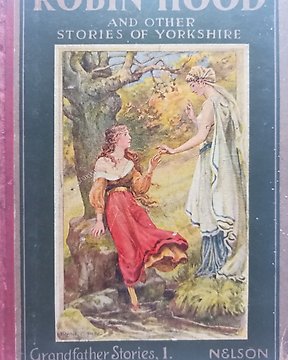
J. Eaton Feasey/Frank Cheyne Pape' - Robin Hood and Other Tales of Yorkshire - 1915
N.º 83918453
![Thomas H. Wakley [ed.], Thomas Wakley jr. [ed.] - The Lancet. A journal of British and foreign medicine, surgery, obstetrics, physiology, chemistry - 1896](https://assets.catawiki.nl/assets/2024/5/14/3/d/9/3d9d1cb7-8d87-4cd8-b590-be087f04434d.jpg)
N.º 83918453
![Thomas H. Wakley [ed.], Thomas Wakley jr. [ed.] - The Lancet. A journal of British and foreign medicine, surgery, obstetrics, physiology, chemistry - 1896](https://assets.catawiki.nl/assets/2024/5/14/3/d/9/3d9d1cb7-8d87-4cd8-b590-be087f04434d.jpg)
[RARE AND MAYBE FIRST APPLICATION OF RöNTGEN RAYS]
Vol. 74 (II), 1896 pp., num. ills.; half calf on marbled boards.
Rather worn and shacky binding, front almost loose from spine, spine damaged, label on spine.
Ex libris of Edgar March Crookshank and with library stamps on front paste-down, library stamp on title page.
Despite the worn binding, the inside is very good and clean: a very interesting volume in the history of early use of Röntgen Rays
* - The first discovery by Wilhelm Roentgen (Über eine neue Art von Strahlen) was published in Sitzungsberichte der Würzburger Phys. med. Gesellschaft und Nature in 1896. This vol. from the same year has on p. 118 a very early account (July 1896) of the use of röntgen rays: John Macintyre.: Roentgen Rays: Photography of Renal calculus, description of an adjustable modification in the Focus tube.
See also Dibner: Heralds of science 162, Horblit #90 and Garrison M 2683
- Also on p. 807-809 a very early article by A. Wright: On the association of serious Haemorrhages with conditions of defective blood-coagulability.
For this article see Garrison Morton 5039: 'The active innoculation of man against typhoid was first performed by Wright in 1896.'
- Some more early articles on Röntgen rays, even with photographs.
John Macintyre (1857 – 1928) was a Scottish medical doctor who set up the world's first radiology department at the Glasgow Royal Infirmary. There, Macintyre produced the first images of renal stones and various inner body parts. For his groundbreaking work, he received many awards and honours.
In 1897 he moved to London and founded the Rontgen Society of London.
Almroth Edward Wright (1861 – 1947) was a British bacteriologist and immunologist. He is notable for developing a system of anti-typhoid fever inoculation, recognizing early on that antibiotics would create resistant bacteria, and being a strong advocate for preventive medicine.
Edgar March Crookshank (1858 – 1928) was an English physician and microbiologist. In 1885, Crookshank founded one of the world's first bacteriological laboratories for human and veterinary pathology in London.
He was also interested in the use of photography to study bacteria and published Photography of Bacteria in 1887, the first text in English devoted solely to the photography of bacteria.
** This lot is part of an important collection that will be auctioned in the coming months through the Catawiki Collection Service. If you also need assistance to sell your collection at auction, ask for our terms directly at this seller's account!
#bookspartnership
Cómo comprar en Catawiki
1. Descubre algo especial
2. Haz la puja más alta
3. Paga de manera segura